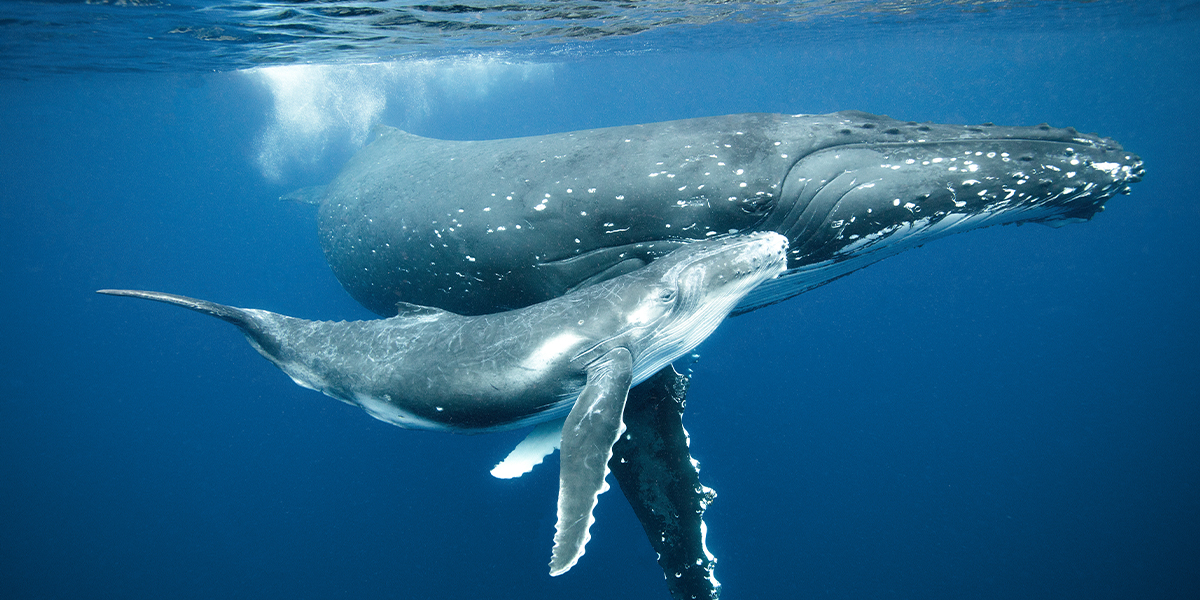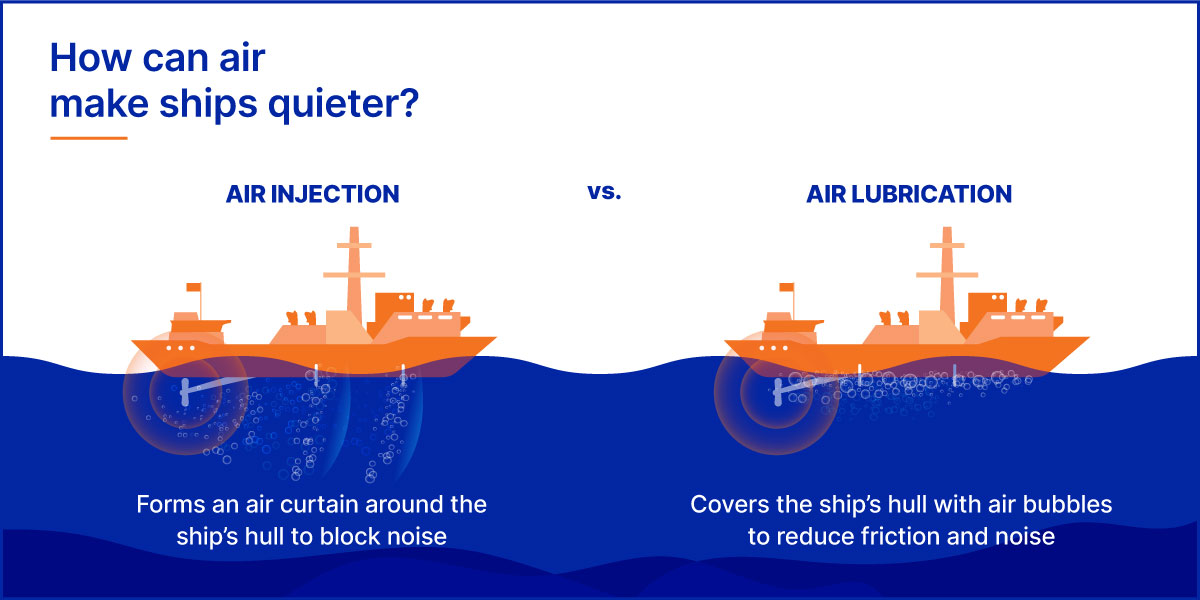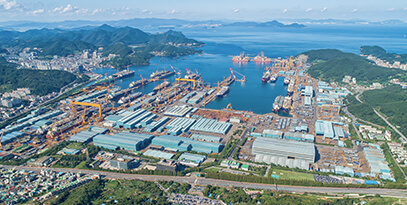Seeking tranquil waters: How to improve marine ecosystems by reducing underwater noise

Sustainable ocean ecosystems are vital not just for the creatures who live there but also for the economies that rely on them for survival. The United Nations (U.N.) estimates that oceans generate $1.5 trillion for nations around the world. They also absorb more than 90% of the world’s excess heat and 30% of all carbon dioxide emissions from human activities.
But the health of these precious ecosystems depends on a healthy soundscape. That’s why noise pollution, or underwater radiated noise (URN), is a grave threat to deep sea creatures and ocean ecosystems everywhere. Sea animals — such as dolphins, whales, seals, fish, shrimps, lobsters, octopuses, jellyfish, and zooplankton — rely heavily on their sense of hearing for survival. They are exceptionally sensitive to loud sounds and are ill equipped to cope with stress from sonar equipment, seismic surveys, underwater construction, and passing ships. It disturbs them, disrupts their behavior patterns, and harms their health.
So, what does sustainability mean in the context of marine environments and noise pollution? It means working to make the oceans quieter through innovation by expanding the use of existing technologies. Fortunately, technologies exist to mitigate underwater noise and restore marine ecosystems to a healthier, more tranquil state. Hanwha and other industry players are exploring innovative ways to apply these technologies to aid in URN reduction.

What is underwater noise pollution?
Marine animals evolved over millions of years in an underwater soundscape that included waves, rain, fish sounds, and the songs of cetaceans, such as whales and dolphins. But now, they have to endure increasing levels of noise from human activities. According to a 2021 article in Science, the growing shipping industry is a major culprit. Over the preceding 50 years, low-frequency noise along major shipping routes increased more than 30-fold.
Ships generate a variety of noises, and there are two main types. The first type of noise is generated by machinery including ship engines, generators, and other equipment. The second is propeller noise, generated by the rotation of the propellers as they produce power to push the ship through the water. The URN caused by ships is primarily the result of cavitation — the formation and collapse of bubbles on the ship’s propeller — that creates an incredibly loud noise when the propellers rotate at high speed. A cargo vessel can emit up to 190 decibels of noise, which is louder than a jet engine at takeoff or a rocket launching from its pad. Given that noise travels faster in water than in air, the noise from a ship can impact a large expanse of the sea.

In an ever-noisier ocean, animals cannot hear each other, making communication and social cooperation difficult. Breeding and feeding patterns change as animals avoid sources of stress. Land-dwelling humans might ask why whales beach themselves, but given the amount of noise pollution these sensitive animals live with, their behavior can be seen as calls for help. Loud sounds can cause whales to panic and rush to the surface too quickly, so that some develop decompression sickness or become stranded on beaches. There is also evidence that larger fish leave noisy environments, reducing commercial catches.
Millions of the world’s people depend on oceans for sustenance, as one U.N. source points out. Excess noise damages the marine food chain and will ultimately harm fisheries and those who rely on them. Clearly, something must be done to make the world’s aquatic environments sustainable in the long term.

How can we quiet underwater noise?
While problems like climate change and chemical pollution will take years to remedy, industries can take action now to control underwater noise pollution. The solutions are already here. Changes to ship design and shipping routes could make a substantial difference. Some ships could run at slower speeds. Most importantly, with ship quieting technologies in place, ocean ecosystems would begin to recover almost immediately.
Different quieting technologies are appropriate for different kinds of ships depending on their structure, purpose, and the speeds at which they operate. One example of a quieting technology is air lubrication. An air lubrication system (ALS) generates a layer of bubbles under a ship’s hull to reduce frictional resistance so the ship glides through the water more easily while using less fuel. Air lubrication, therefore, offers the dual benefit of cutting emissions and muffling engine noise. Although it is used frequently on merchant ships, unfortunately, it is only feasible for flat-bottomed ships and, ultimately, is not a universal solution to URN. There are also new types of propellers that can reduce noise from cavitation, but they can be expensive to install. Another quieting technology that targets propeller noise, called propeller air ingestion and emission (PRAIRIE), involves feeding air through the propeller shaft and blades. To have the greatest possible impact, the maritime industry needs to explore the full range of solutions and apply them consistently across its fleets.

One promising option that Hanwha Ocean is researching to reduce underwater noise pollution is air injection technology. In July 2023, the company succeeded in developing the Masker-Air System, which utilizes this technology to create an air curtain around the hull of a ship to prevent or reduce the noise generated inside from escaping. This technology is currently used on specialized vessels. However, recognizing the potential to reduce URN and lessen the impact of the shipping industry, Hanwha is researching ways to apply air injection technology to merchant ships as well to fill in gaps in the industry’s existing technology.
Hanwha’s shipbuilding expertise and advanced research facilities give the company a significant edge in this area. Hanwha Ocean’s R&D center in Greater Seoul is equipped with an advanced acoustic water tank, the world’s largest towing tank, and a cavitation tunnel with cutting-edge automated systems. The scientists at the R&D center measure underwater noise and are actively testing various quieting methods. In 2023, in a first for Korea, the Norwegian classification body DNV certified Hanwha Ocean for its ability to measure underwater noise. This certification shows that Hanwha Ocean’s management system is trustworthy, has passed audits, and complies with international standards. It is a sign of the company’s commitment to continual improvement and sustainable business performance.
A global responsibility
When the COVID-19 pandemic brought global business activities to a near standstill in 2020, ocean noise decreased by 20%. Despite the modest nature of this change to the marine environment, many aquatic creatures returned to areas from which they had been displaced long ago. This suggests there is reason for optimism. Quieting technologies such as air injection technology have significant potential to reduce underwater noise pollution and restore natural marine ecosystems sooner rather than later.
Keeping the world’s oceans safe and sustainable is a responsibility that we all share. Hanwha takes that responsibility seriously and is actively promoting the use of quieting technologies to replenish and reinvigorate underwater environments around the globe.






